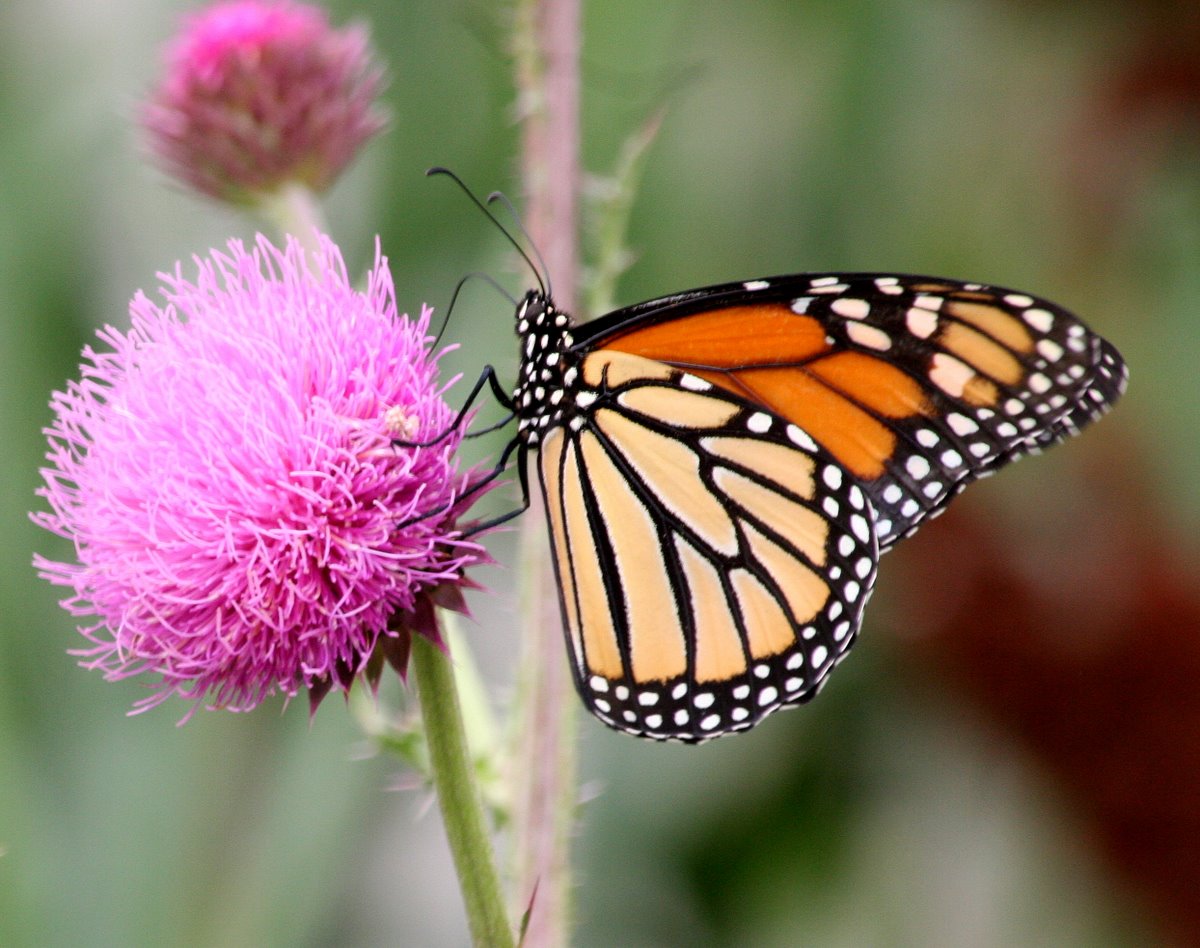A while back I was being interviewed by a television reporter regarding the Bergen County Audubon Society’s “Milkweed in Every Yard” program, a project that was developed to help the Monarch Butterfly. “So why does the Audubon Society care about butterflies, after all aren’t you guys about birds right ?” the grinning reporter asked. I was at first a little surprised by the query. After all who doesn’t care about butterflies? However, it was a very good question, why should anyone care about butterflies anyway?
Butterflies have always held a special place in the hearts of mankind. Some cultures believe butterflies can carry our prayers up to the creator and even believe they are a symbol of our own rebirth. Maybe it is the magnificent array of colors which seem to almost magically appear in Spring that bring out a feeling of delight.
Or maybe it is their miraculous mystical metamorphosis as they transform themselves from a common caterpillar into something of incredible beauty, which connects them to our very soul in a way that comes close to our inner spirit. We want to believe the same is also possible for us. The butterfly is a symbol of great possibilities that like the butterfly we can one day renew ourselves for the better. But my answer to the reporter was a little more science based.
Butterflies are a true “Canary in the Coalmine,” a symbol or a warning about the health of our environment. When butterflies are few and far between it means that things are out of whack or out of balance. Too much pesticide use and too little plant biodiversity means an unhealthy environment, a kind of warning sign, not only for the butterflies, but for people too.
When butterfly habitat is protected or restored we help not only butterflies but we also help many migratory bird species and pollinators. Even amphibians and reptiles can benefit from maintaining butterfly habitat. But it also means a healthy in-balance planet for humans also.
As the Bergen County Audubon Society began to restore butterfly habitat to many areas around the Meadowlands, we could not in our wildest dreams have imagined how quickly all of nature would be put back on the right track and back in balance.
Like turning on a light in a dark room the wildlife returned to our butterfly habitats almost as soon as the right native plants were put in the ground. Ruby-throated Hummingbirds found a new home among the new native plantings, Bumble bees, Dragonflies, Catbirds and Tree Swallows loved the butterfly habitat too, as did the Brown snakes, Wild Turkey and the Yellow Warblers who found a new place to find food and help bring on their next generation .
The many spider species, Eastern Cottontails and occasional Coyote found the new butterfly habitat an oasis, a sanctuary where they could all thrive. Plant it and they will come . Butterfly habitat is in reality is a nature preserve for all wildlife. A place that interconnects the balance of all natural things and draws human kind into its network of interdependence and reminds us we all need and depend on each other to survive .
Improving the habitat that helps butterflies is not only possible in large open spaces but is also something that can be done right in your own backyard no matter where you live. You can transform your entire neighborhood by providing both nectar plants and host plants in your home gardens which will create a wonderful healthy summer haven not only for the butterflies but for the entire family to enjoy for years to come.
On Saturday, July 30 from 10 a.m. to 3 p.m. join the Bergen County Audubon Society, the North Jersey Chapter of the North American Butterfly Association and the New Jersey Sports and Exposition Authority for our annual “Butterfly Day” at DeKorte Park.
During the free event we will be conducting free butterfly walks, seminars, music and games for the kids, all to celebrate the wonderful diversity of butterfly life in the New Jersey Meadowlands. Come see and learn firsthand why butterflies are a very important creature worth protecting and preserving
To register for Butterfly Day, click here
For more info on the North American Butterfly Association – North Jersey Chapter, click here

